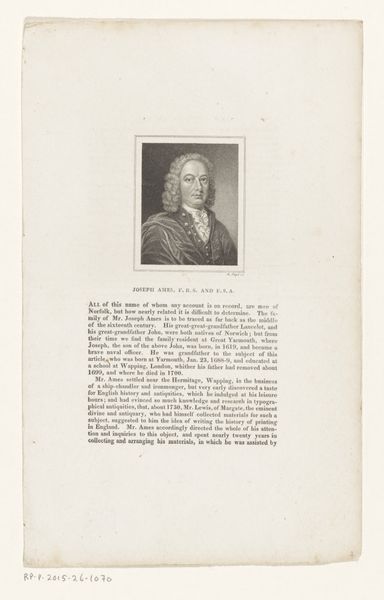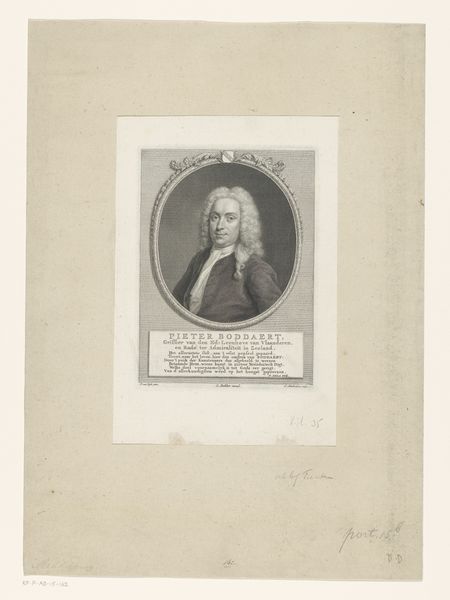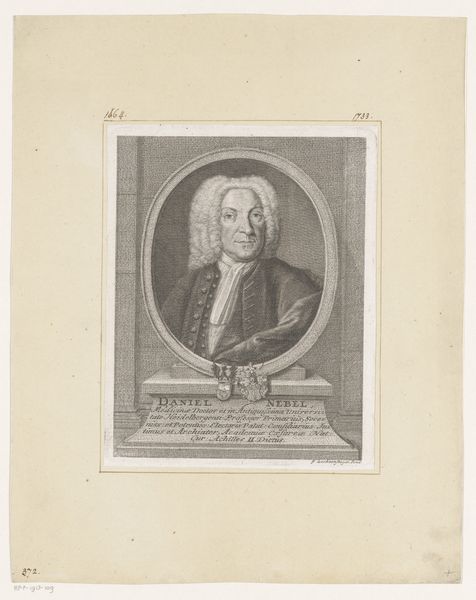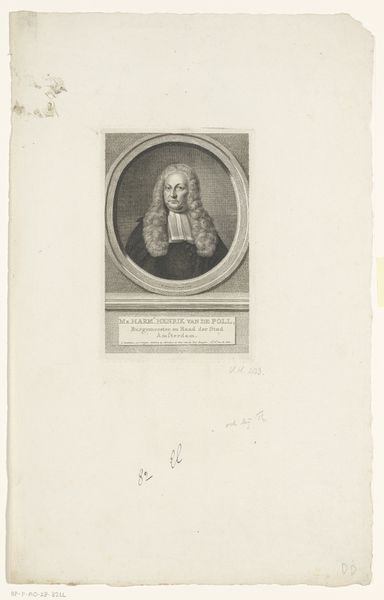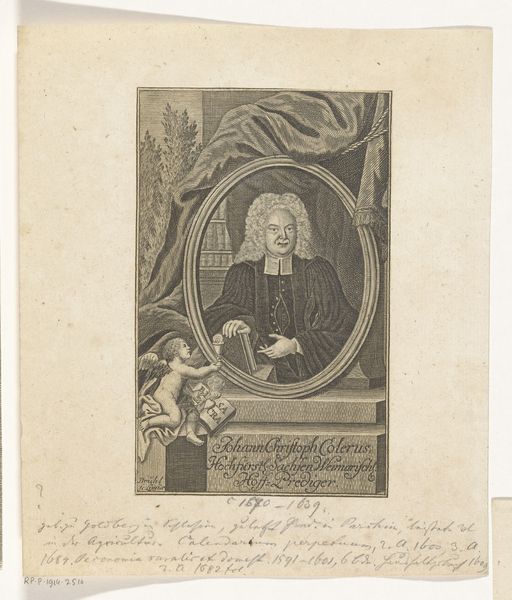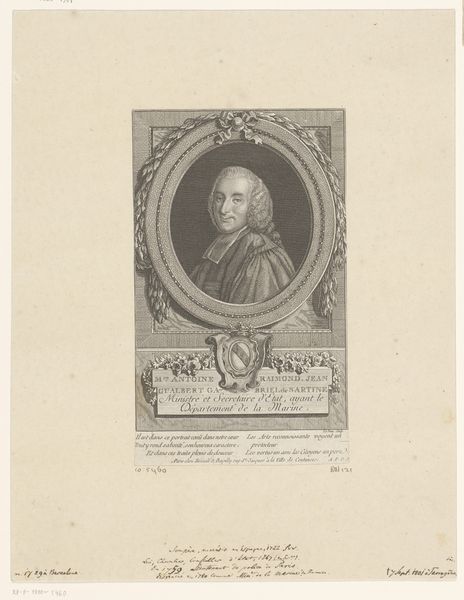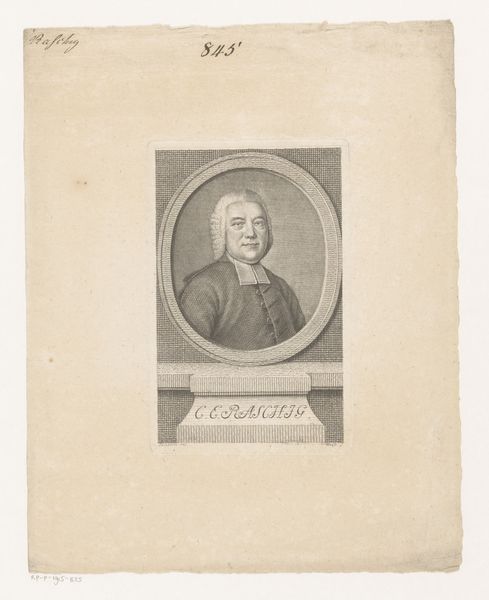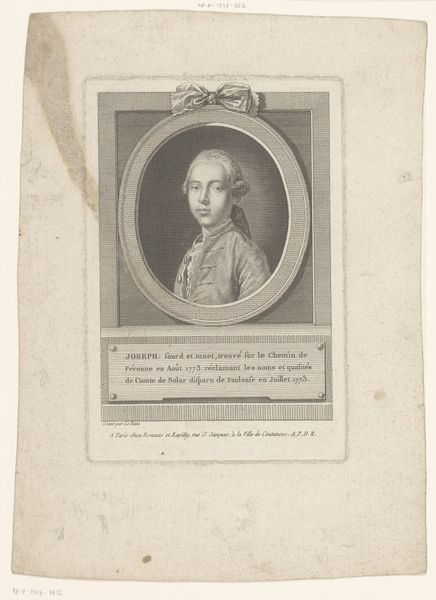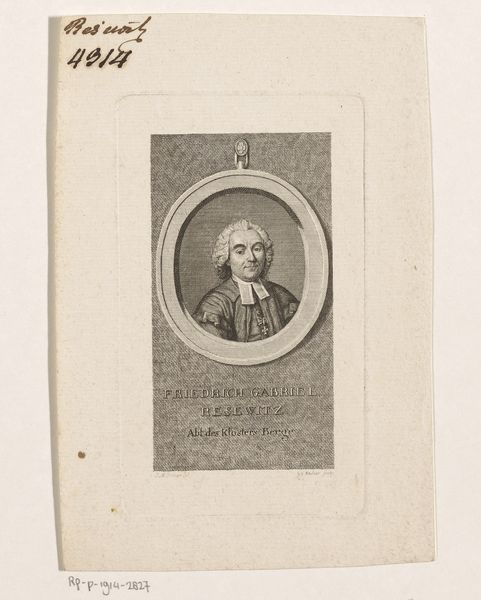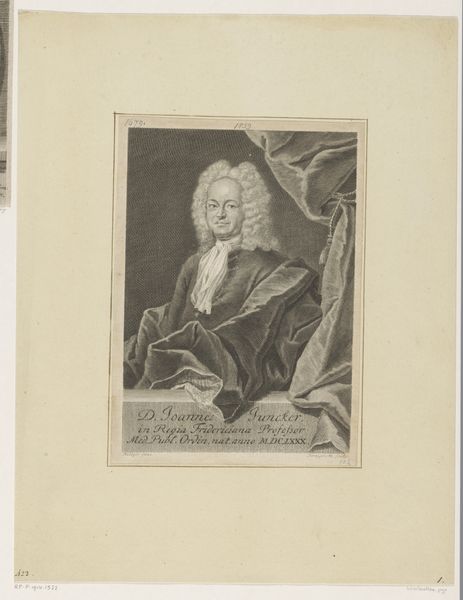
print, paper, engraving
#
portrait
# print
#
paper
#
archive photography
#
history-painting
#
engraving
Dimensions: height 150 mm, width 114 mm, height 294 mm, width 233 mm
Copyright: Rijks Museum: Open Domain
Editor: This is a print from 1761 by Charles Spooner titled "Portret van William Pitt de Oudere," featuring an engraving on paper. It strikes me as quite formal, almost like a political pamphlet with Pitt’s portrait at the top. What stands out to you in this piece? Curator: I am drawn to the layering of processes at play here. It began as an act of political image-making, rendered through the craft of engraving, then mass-produced as a print, likely disseminated widely for consumption and potentially political influence. I'm curious about the kind of paper used – was it cheap stock meant for quick disposal, or a higher quality intended for long-term display? That tells us a lot about how the print was valued. Editor: That’s a great point. The paper looks quite thin. Does the printing process itself lend any insight? Curator: Absolutely. The engraved lines, the density of the image – these speak to the skill and labor involved. This wasn't simply about representing William Pitt; it was about crafting an image that spoke to power and authority through a specific material practice. How does the textual element below contribute? Does it feel like it amplifies the meaning? Editor: It does, adding a layer of propaganda to the portrait. It becomes clear it was not simply for decorational purpose but was politically charged and likely intended for the public's consumption of media. It feels so integrated with the image of William Pitt. Curator: Exactly. By examining the materials, production, and context, we get a much richer understanding than simply admiring a portrait. We see the mechanics of how power was communicated and consumed in the 18th century. Editor: This materialist perspective has broadened my perspective significantly. Thinking about production makes it so much richer. Curator: It’s a way of grounding art in its historical and social reality. Focusing on how something was made, and who made it, reveals a lot about its meaning and impact.
Comments
No comments
Be the first to comment and join the conversation on the ultimate creative platform.
